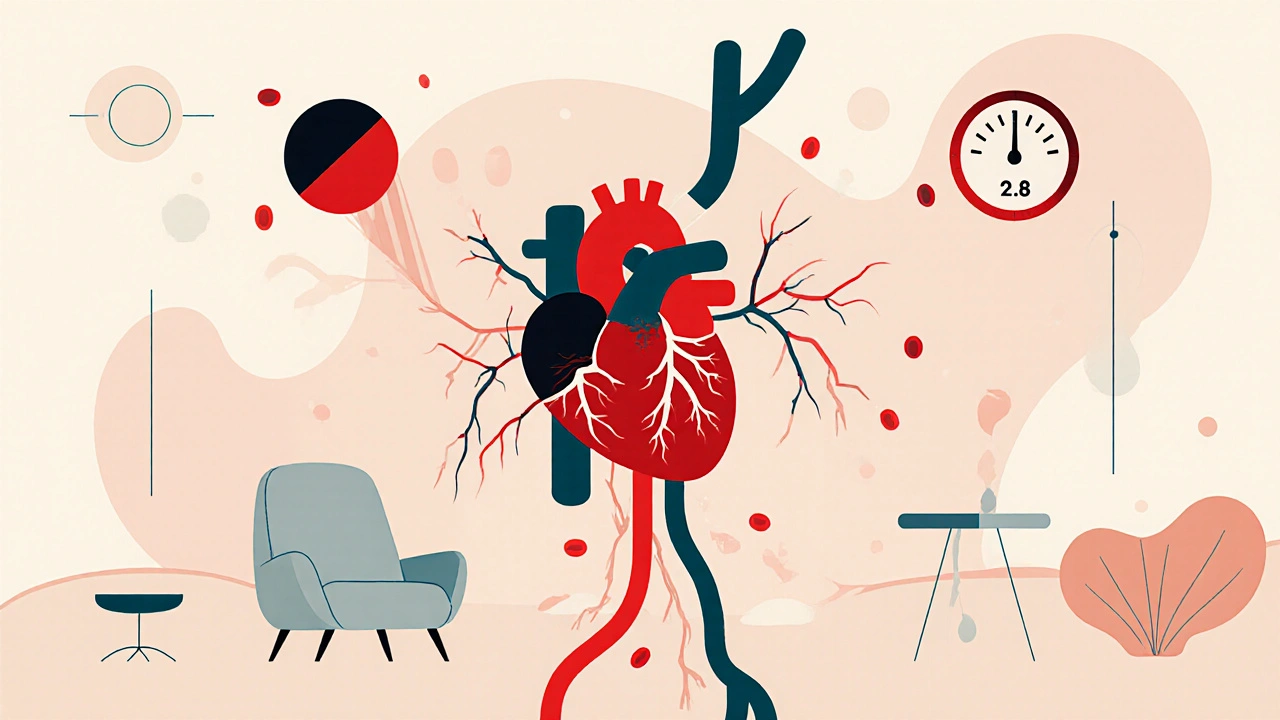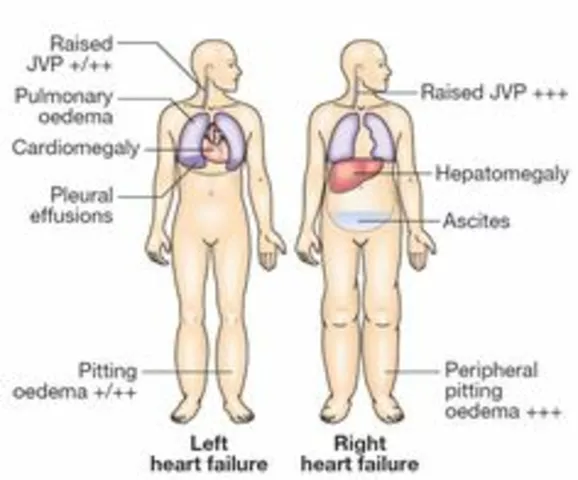When your blood clots too easily, it can lead to life-threatening problems like deep vein thrombosis, pulmonary embolism, or stroke. But if it doesn’t clot enough, even a small cut can become dangerous. Finding the right balance is the core of anticoagulation therapy - and it’s more complex than most people realize. For millions with atrial fibrillation, mechanical heart valves, or a history of blood clots, choosing between warfarin and newer drugs like apixaban or rivaroxaban isn’t just about convenience. It’s about survival, safety, and daily life.
What INR Really Means for Your Blood
The INR - International Normalized Ratio - is a number doctors use to measure how long it takes your blood to clot. It’s not a fancy term. It’s a simple, standardized way to make sure warfarin is working right. For most people on warfarin, the goal is an INR between 2.0 and 3.0. If it’s below 2.0, you’re at higher risk for clots. Above 4.0? Your risk of serious bleeding jumps 2.5 times, according to data from the New England Journal of Medicine.
Why does this matter? Because warfarin doesn’t work the same for everyone. Your genetics, diet, other medications, and even how much vitamin K you eat can change how it affects you. That’s why weekly blood tests are common when you first start. Once you’re stable, you might only need checks every few weeks. But if your INR swings wildly, your doctor has to adjust your dose - and that’s where mistakes happen.
Studies show that only 70% of people on warfarin stay in their target range most of the time. That’s the benchmark for good care. Missed tests, skipped doses, or eating a big plate of kale one day and none the next can throw you off. And when you’re off, you’re at risk.
DOACs: The New Normal - But Not for Everyone
Since 2010, direct oral anticoagulants (DOACs) like apixaban, rivaroxaban, dabigatran, and edoxaban have changed the game. No more weekly blood draws. No more worrying about broccoli or green tea. Fixed doses. Fewer interactions. That’s why, as of 2023, DOACs make up 78% of new prescriptions for atrial fibrillation without heart valve issues.
Apixaban stands out. In the ARISTOTLE trial, it reduced major bleeding by 31% compared to warfarin. That’s not a small win. Rivaroxaban and dabigatran work well too, but they carry a higher risk of stomach bleeding - about 25-30% more than apixaban, based on real-world data. And while DOACs are faster acting (you can stop them 24-48 hours before surgery instead of waiting five days for warfarin), they come with their own problems.
There’s no easy way to check if DOACs are working. Blood tests exist, but they’re not reliable enough for routine use. And if you bleed badly? Reversal agents exist - but they’re expensive. Andexanet alfa, used to reverse apixaban or rivaroxaban, costs about $18,000 per dose. Idarucizumab for dabigatran runs $5,000 per vial. Most people will never need them - but when you do, there’s no backup plan.
Who Still Needs Warfarin?
Despite all the hype around DOACs, warfarin hasn’t disappeared. It’s still the only option for people with mechanical heart valves. DOACs simply don’t work well enough in those cases. The same goes for moderate-to-severe mitral stenosis. If you’ve had a valve replacement, your doctor will likely keep you on warfarin - and you’ll need to monitor your INR for life.
Warfarin also has one big advantage: cost. A month’s supply can run $4 to $30. DOACs? $350 to $550. For Medicare patients, that out-of-pocket cost is a dealbreaker. One 2023 study found 28% of Medicare beneficiaries stopped taking DOACs within a year because they couldn’t afford them.
And while DOACs are easier to take, they’re not foolproof. If you have kidney problems - especially if your creatinine clearance drops below 15-30 mL/min - many DOACs are off-limits. Warfarin doesn’t rely on your kidneys the same way. So if your kidneys are failing, warfarin might be your only choice.

The Hidden Risks Nobody Talks About
Bleeding is the biggest fear with any blood thinner. Bruising? Common. Nosebleeds? Normal. But if you’re vomiting blood, passing dark stools, or having a sudden headache with no injury - that’s an emergency. And it happens. About 78% of people on anticoagulants report bruising more easily. Sixty-three percent say they live with constant anxiety about bleeding.
Some side effects are specific to the drug. Rivaroxaban users report stomach issues in 41% of cases. Dabigatran can cause indigestion and throat irritation. Apixaban tends to be the gentlest on the gut. And while DOACs are marketed as safer, they’re not safer for everyone. In cancer patients with gastrointestinal or bladder cancers, DOACs increase bleeding risk by 55% compared to low-molecular-weight heparin, according to the Hokusai VTE Cancer trial.
Even spinal procedures carry hidden dangers. The FDA has boxed warnings for DOACs because of the risk of epidural hematoma - a rare but devastating spinal bleed - if you get an epidural or spinal tap while on these drugs. Doctors now check your last dose timing carefully. One wrong move, and you could be paralyzed.
How Long Do You Really Need to Stay on Blood Thinners?
Most people assume if they’ve had a blood clot, they’ll be on anticoagulants forever. Not true. The American Society of Hematology says treatment should be tailored. For a first blood clot caused by surgery or injury, three months is often enough. If you had a clot with no clear cause - an unprovoked deep vein thrombosis or pulmonary embolism - and your bleeding risk is low (HAS-BLED score under 3), lifelong therapy is recommended.
That’s a hard decision. Do you want to take a pill every day for the rest of your life? Do you accept the risk of bleeding to prevent another clot? There’s no right answer. It’s personal. Some patients, like Juliet, a nurse who ignored her own clot symptoms while caring for her child, realize too late how easy it is to neglect your own health.

What’s Next? The Future of Blood Thinners
Science is moving fast. In November 2023, the FDA approved milvexian, a new drug that targets factor XIa. Early trials show it cuts bleeding risk by 22% compared to apixaban - without losing effectiveness. That’s huge. If it holds up in larger studies, it could become the next standard.
Other innovations are on the horizon. RNA-based drugs like fitusiran, which lowers antithrombin levels, are in phase 3 trials. AI algorithms are being tested to predict bleeding risk with 82% accuracy, helping doctors pick the right drug and dose for each person.
But here’s the catch: innovation doesn’t always mean accessibility. Even with all these advances, cost and kidney function still limit who gets the best care. And while DOACs dominate new prescriptions, warfarin still saves lives - especially in places where labs are scarce or prescriptions are unaffordable.
What Should You Do?
If you’re on a blood thinner, ask these questions:
- Is my drug right for my condition? (Not everyone with AFib needs a DOAC.)
- Am I getting my INR checked regularly if I’m on warfarin?
- Have I had my kidney function tested in the last six months?
- Do I know the signs of serious bleeding - and what to do if they happen?
- Can I afford this medication long-term?
There’s no one-size-fits-all solution. The best anticoagulant is the one you can take safely, affordably, and consistently. For some, that’s warfarin. For others, it’s apixaban. For a few, it’s still heparin shots. Your doctor’s job isn’t to pick the newest drug. It’s to pick the right one for you.
What does an INR of 3.5 mean?
An INR of 3.5 means your blood is taking longer to clot than normal. For most people on warfarin, this is above the target range of 2.0-3.0. It increases your risk of bleeding, especially in the brain or gut. Your doctor may lower your dose or hold it temporarily. If your INR goes above 4.0, the risk of major bleeding rises 2.5 times. Always contact your provider if your INR is high.
Can I drink alcohol while taking DOACs?
Moderate alcohol use is usually okay with DOACs - but heavy drinking is dangerous. Alcohol can irritate your stomach lining and increase bleeding risk, especially with drugs like rivaroxaban or dabigatran. It can also affect how your liver processes these medications. Stick to one drink a day or less, and avoid binge drinking. Always tell your doctor how much you drink - even if you think it’s "not a lot."
Do DOACs require regular blood tests?
No, DOACs don’t require routine blood tests like warfarin does. That’s one of their biggest advantages. But your doctor should still check your kidney function every 6 to 12 months - or more often if you’re older or have kidney disease. Some labs can test for DOAC levels if needed, but these tests aren’t used for daily management. They’re only for emergencies or if your doctor suspects you’re not taking your medication.
What happens if I miss a dose of my blood thinner?
If you miss a dose of a DOAC, take it as soon as you remember - but only if it’s within 6 to 12 hours of your usual time. If it’s been longer, skip the missed dose and take your next one at the regular time. Never double up. For warfarin, missing a dose is riskier because it builds up slowly. If you miss one, take it the same day. If you miss two or more, call your doctor. Missing doses increases your risk of clots - and that’s often more dangerous than a single missed pill.
Are there foods I should avoid with blood thinners?
With warfarin, you need to keep your vitamin K intake steady - not avoid it. Foods like spinach, kale, broccoli, and Brussels sprouts can lower your INR if you eat them inconsistently. The key is consistency. Don’t eat a huge salad every day, then none for a week. With DOACs, you don’t need to worry about vitamin K. But grapefruit and St. John’s Wort can interfere with some DOACs, so avoid those. Always check with your doctor before starting any new supplement or herbal product.
Final Thoughts: Safety Is a Team Effort
Anticoagulation isn’t just about popping a pill. It’s about knowing your body, tracking your symptoms, and communicating with your care team. Whether you’re on warfarin or a DOAC, your success depends on consistency - not the drug itself. The best medication is the one you take every day, without fear, without cost stress, and without confusion. Talk to your doctor. Ask questions. Don’t let fear stop you from living - but don’t ignore the warning signs either. Your blood is thinning for a reason. Make sure it’s doing what it’s supposed to.







Christopher Robinson
20 November 2025 - 12:34 PM
Just wanted to say this post is one of the clearest explanations of anticoagulation I’ve ever read. 🙌 I’ve been on apixaban for AFib for 3 years now, and honestly, the biggest win wasn’t the lack of blood tests-it was finally not having to count kale leaves like they were calories. My wife still laughs at me for checking the fridge before every meal. But yeah-this stuff matters. Thanks for laying it out without the jargon.
Christopher K
20 November 2025 - 18:42 PM
Oh wow. Another ‘DOACs are perfect’ propaganda piece from Big Pharma’s PR team. Meanwhile, my uncle bled out in the ER after a fall because they couldn’t reverse his rivaroxaban. And guess what? The hospital charged $20K for the reversal agent he never asked for. We’re not all rich enough to gamble our lives on ‘convenience.’ Warfarin saved my dad’s life for 12 years. Don’t act like science is done.
Angela Gutschwager
21 November 2025 - 02:57 AM
Missed a dose. Took it 14 hours later. Now I’m terrified.
Andy Feltus
22 November 2025 - 00:45 AM
It’s funny how we treat blood thinners like they’re just another pill. But they’re not. They’re a daily negotiation between fear and survival. You’re not just taking a drug-you’re negotiating with your own biology, your finances, your doctor’s time, and the fact that your body might just decide today’s the day it betrays you. We don’t talk about that enough. We talk about INR ranges and reversal agents like they’re trivia. But for the people living it? It’s existential.
harenee hanapi
22 November 2025 - 11:38 AM
OMG I’ve been on warfarin since 2018 and I just realized I’ve been eating spinach EVERY DAY and I didn’t know that was bad?!! I thought it was healthy?? My INR was 4.8 last month and my doctor was like ‘why are you doing this to yourself?’ I cried for 3 hours. Now I’m scared to eat anything green. Also, my cat licked my pill bottle and now I think she’s poisoned. I’m not sure if I should take her to the vet or just pray. 😭
James Ó Nuanáin
22 November 2025 - 21:55 PM
One must observe that the structural inequities inherent in pharmaceutical pricing mechanisms are profoundly dissonant with the ethical imperatives of medical care. The fact that a life-saving anticoagulant may be rendered inaccessible due to socioeconomic status-rather than clinical indication-is not merely a policy failure; it is a moral catastrophe. The United Kingdom’s NHS, by contrast, ensures equitable access to DOACs and warfarin alike, irrespective of income. One can only hope that the United States will eventually evolve beyond its profit-driven model of healthcare.
Nick Lesieur
24 November 2025 - 10:43 AM
sooo… if i miss a dose of my apixaban, i just skip it? no biggie? lol i’ve been doing that for 6 months and i’m still alive. also why do doctors act like we’re all gonna die if we eat one leaf of kale? i ate a salad yesterday and my INR was fine. maybe the whole thing is a scam? 🤔
Dion Hetemi
26 November 2025 - 02:58 AM
Let’s be real. The whole DOAC vs warfarin debate is just a numbers game played by people who’ve never had to live with a bleeding ulcer or a brain hemorrhage. The stats look good on paper. But real people? We’re the outliers. The ones who bleed for no reason. The ones who can’t afford the reversal agent. The ones whose kidneys are failing and whose doctors shrug and say, ‘Well, you’ve got options.’ No. I don’t. I’ve got a pill that costs $400 and a 20% chance I’ll die if I fall. So yeah. I’m still on warfarin. And I’m tired of being told I’m ‘not doing it right’ because I’m not on the ‘best’ drug.
Timothy Reed
27 November 2025 - 15:03 PM
This is an excellent, balanced overview. I appreciate how you didn’t just push the ‘newer is better’ narrative. For patients with mechanical valves or renal impairment, warfarin remains essential-and the fact that it’s affordable and well-understood is a huge advantage. The real challenge isn’t choosing between drugs-it’s ensuring patients have access to consistent monitoring, education, and support. Too often, we treat anticoagulation like a set-it-and-forget-it prescription. It’s not. It’s a lifelong partnership with your body-and your care team.
river weiss
27 November 2025 - 19:03 PM
One of the most overlooked aspects of anticoagulation therapy is the psychological burden-not just the physical risks. The anxiety of bruising, the dread of minor injuries, the constant self-monitoring-it wears on you. I’ve been on rivaroxaban for four years. I still check my stool color every morning. I still avoid ice hockey. I still flinch when I sneeze too hard. No one talks about that. The medical community focuses on INR ranges and renal clearance. But what about the person who can’t sleep because they’re afraid they’ve bled internally? That’s the real cost of being on a blood thinner.
Brian Rono
28 November 2025 - 15:02 PM
Let me guess-this post was sponsored by Bristol Myers Squibb. Apixaban is ‘gentler on the gut’? Sure. And I’m the Queen of England. The ‘lower bleeding risk’ is statistically significant in trials where participants were monitored like lab rats. Real-world data? My cousin’s husband took apixaban, fell in the shower, and died from a subdural hematoma. No reversal agent. No warning. Just a $5000 pill and a funeral. The ‘new normal’ is just the old normal with a prettier label.
seamus moginie
28 November 2025 - 16:43 PM
God bless the man who wrote this. I’m from County Cork and I’ve been on warfarin since my stroke in ‘21. My GP here doesn’t even have an INR machine-so I drive 45 minutes to Cork city every 3 weeks. And I pay €12 a month for it. Meanwhile, my cousin in Boston is on apixaban and says he’s ‘just taking a pill’-but he pays $500 a month and his insurance almost denied it. We’re not all lucky. But this post? It sees us. Thank you.
Dana Dolan
29 November 2025 - 18:39 PM
Just had my INR checked today-3.2. Doctor said ‘perfect.’ I cried. Not because I’m happy. Because I’m tired. Tired of being a walking time bomb. Tired of explaining why I can’t have a glass of wine. Tired of wondering if my next headache is a clot or a bleed. I don’t want to be brave. I just want to be safe.
Zac Gray
1 December 2025 - 05:25 AM
Look-I get it. DOACs are convenient. But convenience isn’t safety. And safety isn’t just about bleeding risk-it’s about predictability, reversibility, and cost. I’ve been on warfarin for 15 years. I’ve had my INR swing from 1.8 to 4.1 because I ate a big bowl of kale and forgot to tell my doctor. But I’ve also had my dose adjusted in real time. I’ve had a nurse call me at 8 p.m. to ask if I took my pill. I’ve had a pharmacist track my vitamin K intake like a spreadsheet. That’s care. That’s human. DOACs are automated. Warfarin is a relationship. And sometimes, relationships are what save lives.
Kara Binning
3 December 2025 - 03:58 AM
So… if I’m on DOACs and I need a spinal tap, I’m basically gambling with paralysis? And the only way to know if I’m safe is to guess when I took my last dose? That’s not medicine. That’s Russian roulette with a $18,000 bullet. And don’t even get me started on the fact that my insurance won’t cover the lab test that could tell me if the drug’s in my system. I’m supposed to trust a pill I can’t measure, with a reversal agent I can’t afford, and a 0.01% chance of dying if I sneeze too hard. Thanks, modern medicine.